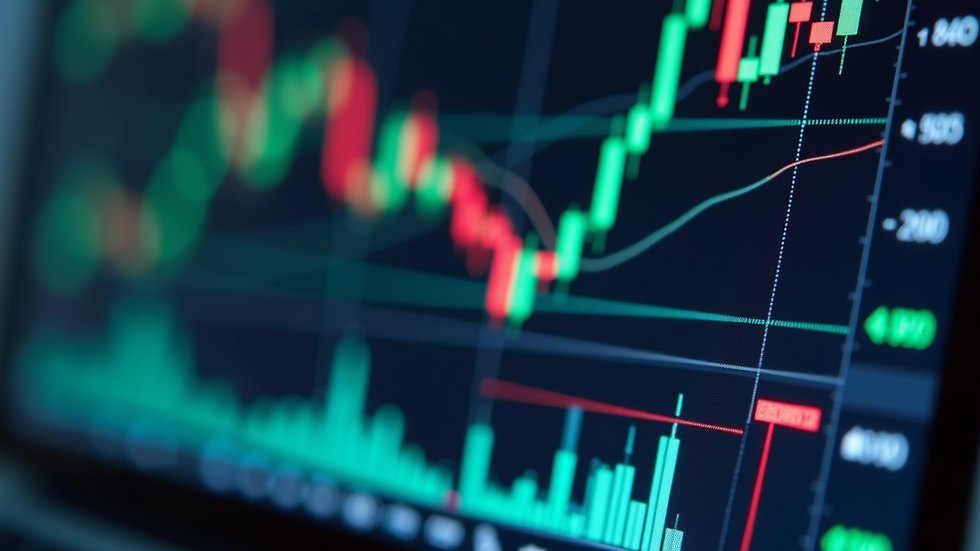Leveraged Forex Trading in Retail: The Beginning of the End
- forex368

- Jul 11
- 4 min read
If you've been following the Forex market closely, you've probably noticed the increasing scrutiny around leveraged forex trading, particularly in the retail sector.

Once hailed as a gateway to substantial profits with minimal investment, leveraged forex trading is now under the microscope.
Regulatory bodies worldwide are clamping down, brokers are stretching legal boundaries, and the landscape is changing rapidly. It’s high time to confront the hard truths: leveraged forex trading in retail is a sham, and its days are numbered.
The Illusion of Leverage: Too Good to Be True
At its core, leveraged forex trading offers the allure of significant gains by allowing traders to control large positions with a relatively small amount of capital. For instance, with 100:1 leverage, you can control $100,000 with just $1,000. Sounds fantastic, right?
The problem is that the same leverage that magnifies profits also exponentially increases risks. A minor market movement in the wrong direction can wipe out your entire investment in seconds.
For many retail traders, this high-risk, high-reward proposition is more akin to gambling than investing. It's a game where the odds are stacked against the inexperienced and undercapitalized. The unfortunate reality is that most retail traders lose money, with studies indicating that about 70-80% of retail traders end up in the red.
Regulatory Crackdown: The Writing on the Wall
Recognizing the inherent risks and the widespread losses among retail traders, regulatory bodies worldwide have begun to impose stringent restrictions on leveraged forex trading.
The UK's Financial Conduct Authority (FCA) has been at the forefront of this movement. In recent years, the FCA has slashed the maximum leverage for retail traders to as low as 30:1 for major currency pairs and even lower for more volatile instruments.
In the United States, the Commodity Futures Trading Commission (CFTC) and the National Futures Association (NFA) have gone even further. Retail forex trading is heavily regulated, with a maximum leverage cap of 50:1 for major pairs and 20:1 for minors.
Moreover, only brokers registered with the CFTC can offer forex trading services to U.S. clients, significantly reducing the number of accessible brokers.
Australia's Australian Securities and Investments Commission (ASIC) has also jumped on the bandwagon, implementing leverage limits similar to those in the UK and Europe. This regulatory tightening is not just limited to a few regions; it’s a global trend indicating a seismic shift in how leveraged forex trading is perceived and managed.

Brokers on the Run: Dodging Regulators
With regulatory nooses tightening, many brokers are finding it increasingly difficult to operate within legal frameworks. Some are resorting to questionable tactics to continue offering high-leverage products to retail clients.
This includes setting up shop in lightly regulated jurisdictions or offshore havens where oversight is minimal. While this might provide temporary relief, it's a precarious game that can quickly unravel, leaving traders in a lurch.
For instance, several brokers have moved operations to places like the Seychelles, Belize, or Vanuatu, where regulatory scrutiny is lax.
These jurisdictions often lack the rigorous oversight and investor protections found in more established markets. While it might be tempting to follow brokers to these new havens, the risks are significantly higher.
Not only are these brokers more likely to engage in unethical practices, but traders also have limited recourse if things go south.
CFDs: The Last Nail in the Coffin
Contracts for Difference (CFDs), another popular instrument among retail traders, are also under heavy fire.
The FCA has banned the sale of crypto-derivatives to retail consumers, a move that signals a broader crackdown on high-risk CFD products. Across Europe, the European Securities and Markets Authority (ESMA) has imposed similar restrictions, including leverage limits and standardized risk warnings.
The reason behind this is simple: CFDs are complex and carry a high risk of losing money rapidly due to leverage.
They are not suitable for all investors, and many retail clients end up with substantial losses. By tightening the noose around CFDs, regulators are sending a clear message: the days of unrestrained speculative trading for retail investors are over.
The Verdict: It’s Time to Move On
The dream of getting rich quick through leveraged forex trading is fading fast. The increasing regulations, the shift of brokers to murky jurisdictions, and the inherent risks of leverage all point to one conclusion: it’s time for retail traders to reconsider their strategies. The retail forex market, as we know it, is coming to an end.
For those who still want to trade forex, the best approach is to do so with lower leverage, better risk management, and a clear understanding of the market. Alternatively, there are other investment avenues that might offer better risk-adjusted returns without the pitfalls of high leverage.
In the grand scheme of things, the end of leveraged forex trading for retail investors might be a blessing in disguise. It forces traders to adopt more sustainable and responsible trading practices, ultimately leading to a healthier and more stable financial market.
Forex Trading is over
Leveraged forex trading in retail is a relic of the past, and its demise is inevitable. The regulatory environment is tightening, brokers are becoming increasingly elusive, and the inherent risks are simply too high for most retail traders.
It's time to face reality: leveraged forex trading is a sham and a scam for the unwary. Move on to more secure, transparent, and regulated trading environments. The writing is on the wall, and the prudent trader will heed the warning and adapt accordingly.




